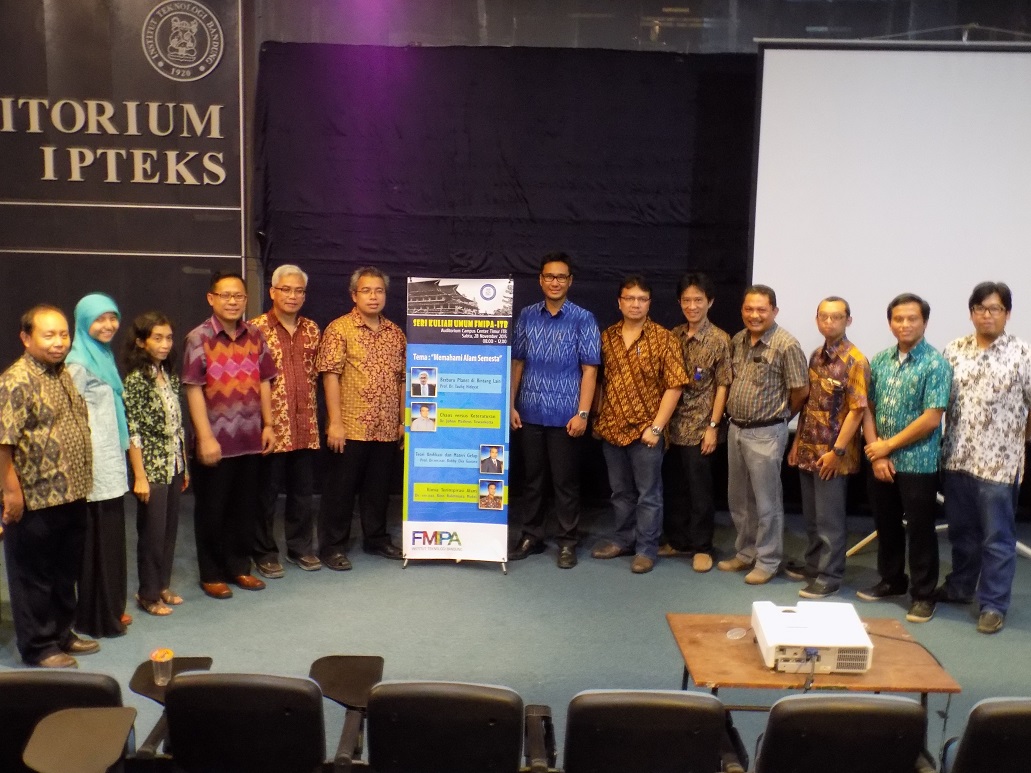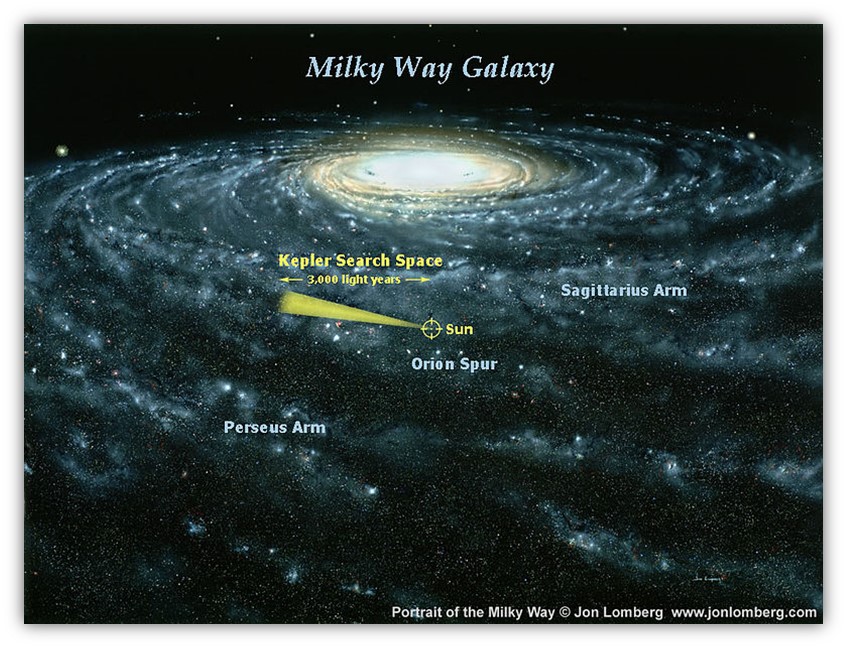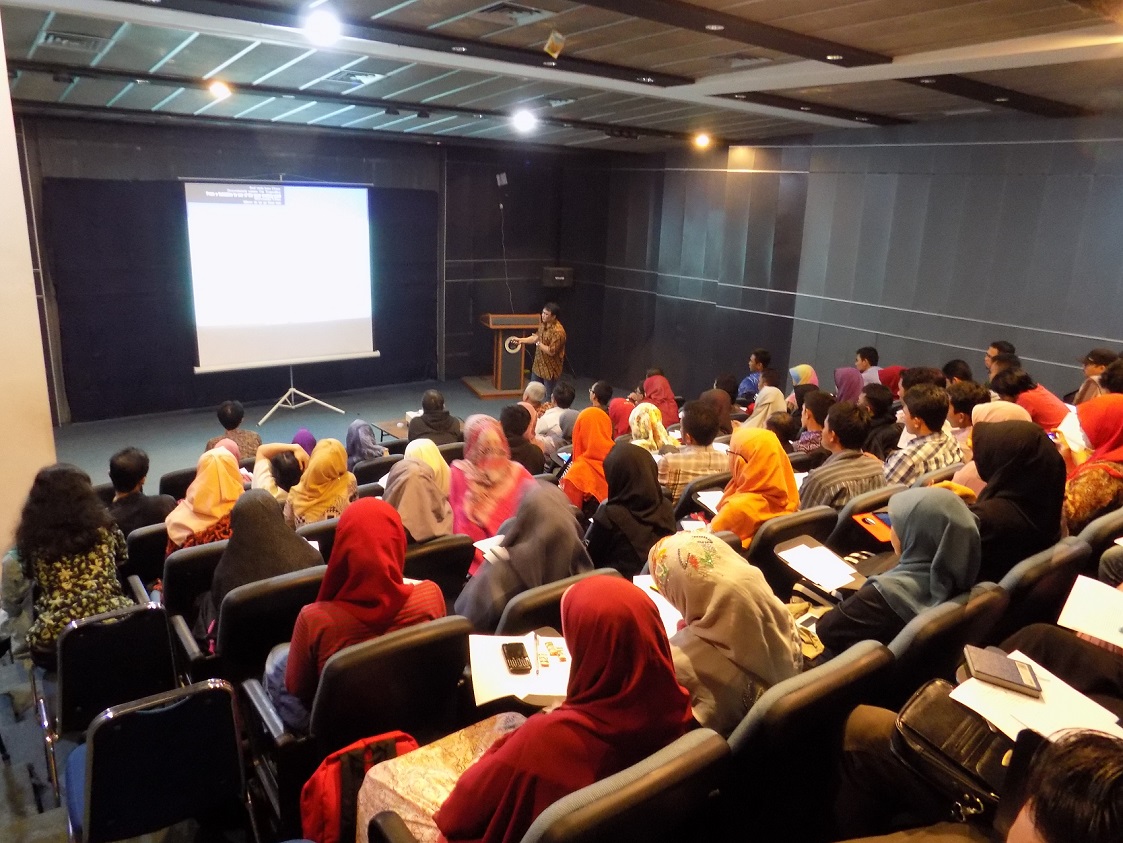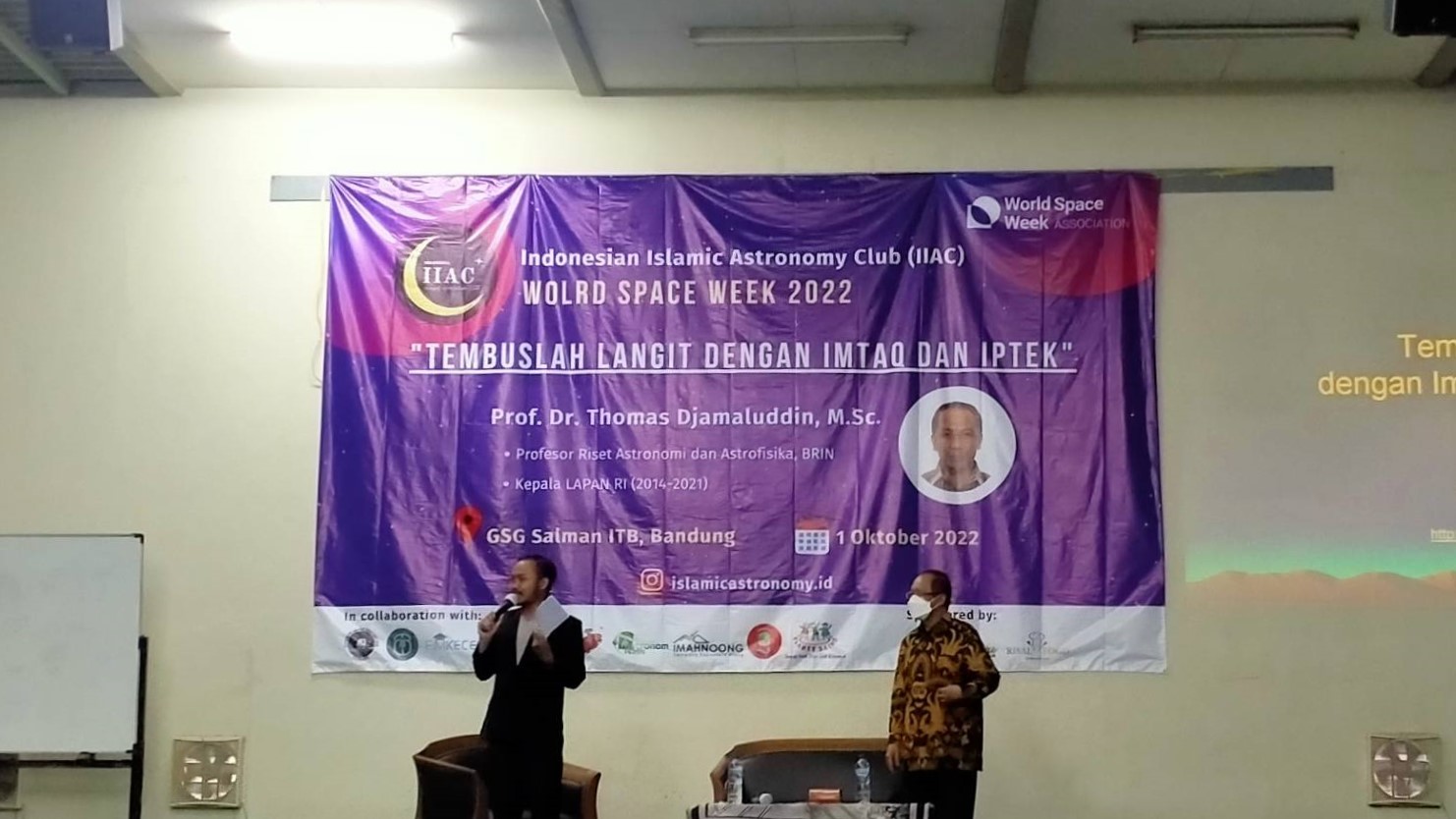FMIPA ITB Encourages Communities to Understand The Universe Scientifically

BANDUNG, itb.ac.id - Human knowledge regarding the universe always makes human beings increasingly curious on their existence on Earth and this world. Upon seeing the mentioned  phenomenon, the science of astronomy carried a large responsibility in providing the answer. Human existence, which once were considered exceptional, is now no longer considered special due to the large number of planetary systems similar to the solar system. This was presented by Dr. Taufiq Hidayat in the Faculty of Mathematics and Natural Sciences (FMIPA) ITB Public Lecture Series on Saturday (28/11/15). "We offer this first series of FMIPA ITB Public Lectures to the public as a form of accountability as an institution that continuously works for the sake of science development in Indonesia," said Prof. Dr. Edy Tri Karimuddin as Dean of the FMIPA ITB, opening the public lecture in the Auditorium of East Campus Center ITB.
phenomenon, the science of astronomy carried a large responsibility in providing the answer. Human existence, which once were considered exceptional, is now no longer considered special due to the large number of planetary systems similar to the solar system. This was presented by Dr. Taufiq Hidayat in the Faculty of Mathematics and Natural Sciences (FMIPA) ITB Public Lecture Series on Saturday (28/11/15). "We offer this first series of FMIPA ITB Public Lectures to the public as a form of accountability as an institution that continuously works for the sake of science development in Indonesia," said Prof. Dr. Edy Tri Karimuddin as Dean of the FMIPA ITB, opening the public lecture in the Auditorium of East Campus Center ITB.
 phenomenon, the science of astronomy carried a large responsibility in providing the answer. Human existence, which once were considered exceptional, is now no longer considered special due to the large number of planetary systems similar to the solar system. This was presented by Dr. Taufiq Hidayat in the Faculty of Mathematics and Natural Sciences (FMIPA) ITB Public Lecture Series on Saturday (28/11/15). "We offer this first series of FMIPA ITB Public Lectures to the public as a form of accountability as an institution that continuously works for the sake of science development in Indonesia," said Prof. Dr. Edy Tri Karimuddin as Dean of the FMIPA ITB, opening the public lecture in the Auditorium of East Campus Center ITB.
phenomenon, the science of astronomy carried a large responsibility in providing the answer. Human existence, which once were considered exceptional, is now no longer considered special due to the large number of planetary systems similar to the solar system. This was presented by Dr. Taufiq Hidayat in the Faculty of Mathematics and Natural Sciences (FMIPA) ITB Public Lecture Series on Saturday (28/11/15). "We offer this first series of FMIPA ITB Public Lectures to the public as a form of accountability as an institution that continuously works for the sake of science development in Indonesia," said Prof. Dr. Edy Tri Karimuddin as Dean of the FMIPA ITB, opening the public lecture in the Auditorium of East Campus Center ITB.
The Advancement of Human Understanding Regarding The Universe
The limited knowledge and technology have made humans in the past can only identify the Sun, Moon, Mercury, Jupiter, Venus, Mars, and Saturn as solar system objects beside of Earth, resulting i n the presence of seven days in a week. It was in the 19th century that other planets like Uranus, Neptune, and Pluto was discovered. However, redefinition of astronomical terms by the IAU in 2006 has made Pluto classified as a dwarf planet along with Ceres and Eris. The end of the 20th century witnessed the discovery of exoplanets now named Bellerophon when orbiting a main sequence star, namely 51 Pegasi. IAU defined exoplanets as an astronomical objects with a mass that is not enough to do the fusion reactions of Deuterium. Along with the development of optical technologies and electromagnetic waves in the 21st century, various exoplanets were discovered. Nearly 2000 planets outside the solar system had been found by several different methods of detection.
n the presence of seven days in a week. It was in the 19th century that other planets like Uranus, Neptune, and Pluto was discovered. However, redefinition of astronomical terms by the IAU in 2006 has made Pluto classified as a dwarf planet along with Ceres and Eris. The end of the 20th century witnessed the discovery of exoplanets now named Bellerophon when orbiting a main sequence star, namely 51 Pegasi. IAU defined exoplanets as an astronomical objects with a mass that is not enough to do the fusion reactions of Deuterium. Along with the development of optical technologies and electromagnetic waves in the 21st century, various exoplanets were discovered. Nearly 2000 planets outside the solar system had been found by several different methods of detection.
Among the various methods of exoplanet detection, Doppler Spectroscopy is a fairly powerful method that has identified more than half of extrasolar planetary system known to this moment. This method measures the radial velocity of the star through their spectra. Facilities of the High Accuracy Radial velocity Planet Searcher (HARPS) belongs to the European Southern Observatory uses this principle with precision up to 0.97 meters per second.
Another alternative is the Astrometry method. Astrometry is a method of observing the motion of stars that due to their mass and the mass of its planets in the, the distance between the planet and the star in the field of sky, as well as the distance of the system towards the observer. "Astrometry and radial velocity are measured by the principles of kinematics, while the transit method, gravitational microlensing, and direct imaging harness the principle of photometry," call the man who earned his doctorate in Astrophysics at the University of Paris 7-Denis Diderot, France.
Kepler Spacecraft as The Milestone of 20 Years in Exoplanets Detection
Human curiosity of extraterrestrial life has raised many questions about exoplanets. However, among the large number of planets which have been surveyed and examined by fellow astronomers, only few are feasible to be inhabited by such forms of life on Earth. An exoplanet should be located in the Habitable Zone, both stellar and galactic, in order to have life-supporting condition like Ea rth's. This condition generally is a condition where water can be found in liquid form. The location of the Habitable Zone depends on several factors, such as the distance of a planet to its star. The contents and elements of the planet also affect the probability of life existence on the planet. Through spectroscopy, some exoplanets with masses between the mass of the Earth and Neptune mass is allegedly covered by water in liquid form. The most similar exoplanet to Earth up to now is the Kepler-452b. This Super-earth exoplanet is orbiting its star with a period of 385 days. Revolving a star in the constellation Cygnus G2, Kepler-452b receives energy from the star in an amount which is almost equal to that of Earth from the Sun is received. This exoplanet was discovered by NASA's Kepler spacecraft launched back in 2014. Its discovery in July 2015 then marks 20 years of exoplanet search by human kind.
rth's. This condition generally is a condition where water can be found in liquid form. The location of the Habitable Zone depends on several factors, such as the distance of a planet to its star. The contents and elements of the planet also affect the probability of life existence on the planet. Through spectroscopy, some exoplanets with masses between the mass of the Earth and Neptune mass is allegedly covered by water in liquid form. The most similar exoplanet to Earth up to now is the Kepler-452b. This Super-earth exoplanet is orbiting its star with a period of 385 days. Revolving a star in the constellation Cygnus G2, Kepler-452b receives energy from the star in an amount which is almost equal to that of Earth from the Sun is received. This exoplanet was discovered by NASA's Kepler spacecraft launched back in 2014. Its discovery in July 2015 then marks 20 years of exoplanet search by human kind.
The given public lectures inspires knowledge and insights to the community from many backgrounds about the development of science so far. This public lecture series brings a big theme of "Understanding The Universe" with speakers from the FMIPA ITB. The first session was brought by Dr. rer. nat. Rino Rakhmata Mukti which gives insights about Nature-inspired Chemistry and Dr. Johan Matheus Tuwankotta with the topic "Chaos vs. Order". The second session was presented by Prof. Dr. rer. nat. Bobby Eka Gunara with "Unification Theory and Dark Matter" and Prof. Dr. Taufiq Hidayat who spoke of "Hunting Planets in Another Star". This Public Lecture Series initiated by Prof. Dr. Hendra Gunawan of Mathematics study program will be carried out as many as four times a year by presenting an actual and fundamental theme in the meaning of life through the lens of science. "This lecture series will be uploaded to YouTube so that people can understand the contents of the lecture that was delivered even if they were unable to attend," told Prof. Hendra.
nat. Rino Rakhmata Mukti which gives insights about Nature-inspired Chemistry and Dr. Johan Matheus Tuwankotta with the topic "Chaos vs. Order". The second session was presented by Prof. Dr. rer. nat. Bobby Eka Gunara with "Unification Theory and Dark Matter" and Prof. Dr. Taufiq Hidayat who spoke of "Hunting Planets in Another Star". This Public Lecture Series initiated by Prof. Dr. Hendra Gunawan of Mathematics study program will be carried out as many as four times a year by presenting an actual and fundamental theme in the meaning of life through the lens of science. "This lecture series will be uploaded to YouTube so that people can understand the contents of the lecture that was delivered even if they were unable to attend," told Prof. Hendra.
The limited knowledge and technology have made humans in the past can only identify the Sun, Moon, Mercury, Jupiter, Venus, Mars, and Saturn as solar system objects beside of Earth, resulting i
 n the presence of seven days in a week. It was in the 19th century that other planets like Uranus, Neptune, and Pluto was discovered. However, redefinition of astronomical terms by the IAU in 2006 has made Pluto classified as a dwarf planet along with Ceres and Eris. The end of the 20th century witnessed the discovery of exoplanets now named Bellerophon when orbiting a main sequence star, namely 51 Pegasi. IAU defined exoplanets as an astronomical objects with a mass that is not enough to do the fusion reactions of Deuterium. Along with the development of optical technologies and electromagnetic waves in the 21st century, various exoplanets were discovered. Nearly 2000 planets outside the solar system had been found by several different methods of detection.
n the presence of seven days in a week. It was in the 19th century that other planets like Uranus, Neptune, and Pluto was discovered. However, redefinition of astronomical terms by the IAU in 2006 has made Pluto classified as a dwarf planet along with Ceres and Eris. The end of the 20th century witnessed the discovery of exoplanets now named Bellerophon when orbiting a main sequence star, namely 51 Pegasi. IAU defined exoplanets as an astronomical objects with a mass that is not enough to do the fusion reactions of Deuterium. Along with the development of optical technologies and electromagnetic waves in the 21st century, various exoplanets were discovered. Nearly 2000 planets outside the solar system had been found by several different methods of detection.Among the various methods of exoplanet detection, Doppler Spectroscopy is a fairly powerful method that has identified more than half of extrasolar planetary system known to this moment. This method measures the radial velocity of the star through their spectra. Facilities of the High Accuracy Radial velocity Planet Searcher (HARPS) belongs to the European Southern Observatory uses this principle with precision up to 0.97 meters per second.
Another alternative is the Astrometry method. Astrometry is a method of observing the motion of stars that due to their mass and the mass of its planets in the, the distance between the planet and the star in the field of sky, as well as the distance of the system towards the observer. "Astrometry and radial velocity are measured by the principles of kinematics, while the transit method, gravitational microlensing, and direct imaging harness the principle of photometry," call the man who earned his doctorate in Astrophysics at the University of Paris 7-Denis Diderot, France.
Kepler Spacecraft as The Milestone of 20 Years in Exoplanets Detection
Human curiosity of extraterrestrial life has raised many questions about exoplanets. However, among the large number of planets which have been surveyed and examined by fellow astronomers, only few are feasible to be inhabited by such forms of life on Earth. An exoplanet should be located in the Habitable Zone, both stellar and galactic, in order to have life-supporting condition like Ea
 rth's. This condition generally is a condition where water can be found in liquid form. The location of the Habitable Zone depends on several factors, such as the distance of a planet to its star. The contents and elements of the planet also affect the probability of life existence on the planet. Through spectroscopy, some exoplanets with masses between the mass of the Earth and Neptune mass is allegedly covered by water in liquid form. The most similar exoplanet to Earth up to now is the Kepler-452b. This Super-earth exoplanet is orbiting its star with a period of 385 days. Revolving a star in the constellation Cygnus G2, Kepler-452b receives energy from the star in an amount which is almost equal to that of Earth from the Sun is received. This exoplanet was discovered by NASA's Kepler spacecraft launched back in 2014. Its discovery in July 2015 then marks 20 years of exoplanet search by human kind.
rth's. This condition generally is a condition where water can be found in liquid form. The location of the Habitable Zone depends on several factors, such as the distance of a planet to its star. The contents and elements of the planet also affect the probability of life existence on the planet. Through spectroscopy, some exoplanets with masses between the mass of the Earth and Neptune mass is allegedly covered by water in liquid form. The most similar exoplanet to Earth up to now is the Kepler-452b. This Super-earth exoplanet is orbiting its star with a period of 385 days. Revolving a star in the constellation Cygnus G2, Kepler-452b receives energy from the star in an amount which is almost equal to that of Earth from the Sun is received. This exoplanet was discovered by NASA's Kepler spacecraft launched back in 2014. Its discovery in July 2015 then marks 20 years of exoplanet search by human kind.The given public lectures inspires knowledge and insights to the community from many backgrounds about the development of science so far. This public lecture series brings a big theme of "Understanding The Universe" with speakers from the FMIPA ITB. The first session was brought by Dr. rer.
 nat. Rino Rakhmata Mukti which gives insights about Nature-inspired Chemistry and Dr. Johan Matheus Tuwankotta with the topic "Chaos vs. Order". The second session was presented by Prof. Dr. rer. nat. Bobby Eka Gunara with "Unification Theory and Dark Matter" and Prof. Dr. Taufiq Hidayat who spoke of "Hunting Planets in Another Star". This Public Lecture Series initiated by Prof. Dr. Hendra Gunawan of Mathematics study program will be carried out as many as four times a year by presenting an actual and fundamental theme in the meaning of life through the lens of science. "This lecture series will be uploaded to YouTube so that people can understand the contents of the lecture that was delivered even if they were unable to attend," told Prof. Hendra.
nat. Rino Rakhmata Mukti which gives insights about Nature-inspired Chemistry and Dr. Johan Matheus Tuwankotta with the topic "Chaos vs. Order". The second session was presented by Prof. Dr. rer. nat. Bobby Eka Gunara with "Unification Theory and Dark Matter" and Prof. Dr. Taufiq Hidayat who spoke of "Hunting Planets in Another Star". This Public Lecture Series initiated by Prof. Dr. Hendra Gunawan of Mathematics study program will be carried out as many as four times a year by presenting an actual and fundamental theme in the meaning of life through the lens of science. "This lecture series will be uploaded to YouTube so that people can understand the contents of the lecture that was delivered even if they were unable to attend," told Prof. Hendra. 
scan for download







